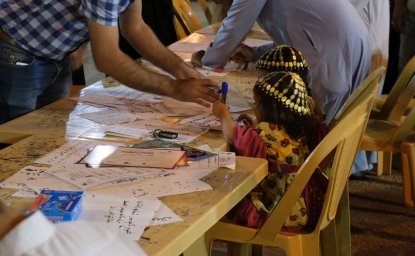182. Language, Nationalism and Serbian Politics

In the former Yugoslavia, language issues have long been both a reflection of inter-ethnic tensions and a catalyst for deepening inter-ethnic animosities. Like religion and ethnicity, language serves as a marker of national identity. Given the ethnic polarization in the former Yugoslavia, language can be a highly emotional and politically sensitive topic. This piece first provides a brief overview of the history of the language-politics interface for the ethnic groups speaking the main language of the former Yugoslavia: Serbo-Croatian. Secondly, it outlines the disintegration of Serbo-Croatian language unity in 1991 as manifested in the emergence of at least three "successor languages" (Bosnian, Croatian and Serbian). Finally, it focuses on the often acrimonious debates of the last few years within Serbia regarding the future of a Serbian standard language.
The effort to unify the language of Serbs and Croats into a single literary language in 1850, when the "Literary Agreement" was signed in Vienna, was part of a broader political agenda. This political agenda was rooted in the desire to unify the South Slavic peoples to counteract increased pressure from the Austro-Hungarian overlords. This movement--known as the "Illyrian" movement--served as a precursor to "Yugoslavism" and the establishment of unified Southern Slavic states (the two Yugoslav states of the twentieth century). In the 1800s, the Illyrians and their allies elevated the dialect of Dubrovnik, Eastern Herzegovina, Western Serbia, and Northwestern Montenegro to the status of the "official literary" language of Serbs and Croats. Ethnic Slavs of all religions in the area, i.e., Catholics, Muslims, and Orthodox Slavs shared this southern dialect, also known at the Stokavian/Ijekavian dialect. In Tito's Yugoslavia, Stokavian/Ijekavian was spoken by the majority of Croats, nearly all Muslim Slavs of Bosnia-Herzegovina and the Sandzak, all Montenegrins, and Serbs in Croatia, Bosnia-Herzegovina, Montenegro, and part of Western Serbia. Ironically, however, at the outset, this Southern dialect was neither the dialect of Zagreb or Belgrade/Novi Sad. The Croat Illyrians intentionally chose to switch allegiances from the Zagreb Kajkavian dialect to the southern Stokavian/Ijekavian dialect in order to foster pan-South Slavic unity. After 1850, Zagreb became the focal point for linguistic efforts to create a unified language based on the Southern dialect.
The Serbs of Belgrade and Novi Sad never accepted the Southern dialect as the basis for their literary language, preferring instead their own Stokavian/Ekavian dialect. They sought to impose this dialect on the Ijekavian-speaking regions during the 1930s in the Serb-dominated Kingdom of Yugoslavia. Language unity for the Serbs and Croats was broken during World War II, when the fascist Independent State of Croatia proclaimed Croatian to be its official language in 1941 and mounted a large-scale campaign to maximally differentiate Croatian from Serbian. When Yugoslavia was reconstituted in 1945, the Tito regime reestablished the unified Serbo-Croatian language and was committed to restoring ethnic and linguistic tranquility. In the 1954 Novi Sad Agreement, the unified language was declared to be a "single" language with two official variants--the Eastern variant around Belgrade (Stokavian/Ekavian) and the Western variant around Zagreb (Stokavian/Ijekavian). This Serbo-Croatian/Croato-Serbian language endured until the breakup of Yugoslavia in 1991.
For the three successor languages to Serbo-Croatian, Stokavian/Ijekavian is an official dialect. In the cases of Croatian and Bosnian it is the sole dialect on which the standard languages are based. The Serbs declared "two pronunciations" as official--the Ekavian of Belgrade-Novi Sad, and the Ijekavian of Western Serbs, and of Vuk Karadzic, the main 19th century reformer of the Serbian language. Thus far, Croat and Bosnian Muslim linguists have carried out most of the efforts to differentiate among the three successor languages. The Croats have reverted to the tradition of purism employed by the fascists in the 1940s, replacing internationalism or words of Serbian origin with native Croatian words. They either resurrected these words from obscure Croatian language dictionaries or simply invented them. The Bosnian Muslims have further distanced Bosnian from both Serbian and Croatian by, among other things, increasing the number of Turkish and Arabic loan words in the language.
Ostensibly at least, the Serb linguists have made little effort to change Serbian or further distance Serbian from the other two successor languages. However, a perusal of the most recent publications on the standardization of Serbian reveal that linguists in the Federal Republic of Yugoslavia (FRY) have been locked in conflict over the future of the Serbian language. Two major crises have erupted, including (1) the debate on the status of the Ijekavian dialect and (2) the controversy surrounding orthographic principles. These linguistic debates have striking political implications.
Three main factions are identified. These include:
- Advocates of the "status quo": Modern Serbian as an outgrowth of Serbo-Croatian
These linguists have links to the ex-Communists, and view the Serbian language as a continuant of the former Eastern variant (Ekavian), the joint language as established in the 1954 Novi Sad Agreement. Pavle Ivic is the most prominent linguist in this group. Officially these linguists sanction the use of both the Cyrillic and Latin alphabets.
- Advocates for rediscovering the Serbian of Vuk and Danicic
These linguists have links to the Serbian opposition. They are noticeably more nationalistic than the "status quo" linguists. They seek to bolster the Ijekavian dialect, which represents the dialect of the Western Serbs who had been abandoned by Milosevic in the aftermath of the wars in Croatia and Bosnia-Herzegovina. These linguists advocate that Serbian should exist in two alphabets, but that the Latin alphabet be that of Danicic, which differs slightly from the modern Croatian Latin alphabet.
- Extreme Serbian nationalists seeking "Orthodox Serbian" language and orthography
These linguists are affiliated with the ultranationalist Radical Party. They seek to deny the entire joint literary tradition with the Croats and return to a pre-Vuk era in orthography. They reject the Latin alphabet altogether and advocate the use of a "Orthodox Cyrillic" alphabet, to include letters found in pre-1818 Serbian.
While the "status quo" linguists have thus far prevailed within the FRY, the two other factions have been gaining in influence. It is likely that issues relating to the rights of Ijekavian speakers in Montenegro, Sandzak, Western Serbia and of refugees from Croatia and Bosnia-Herzegovina will continue to intensify in the post-bombing period. The deep divisions among Serb linguists are likely to increase, as the country endures further political, economic, and social turmoil.
Author

Global Europe Program
The Global Europe Program is focused on Europe’s capabilities, and how it engages on critical global issues. We investigate European approaches to critical global issues. We examine Europe’s relations with Russia and Eurasia, China and the Indo-Pacific, the Middle East and Africa. Our initiatives include “Ukraine in Europe”—an examination of what it will take to make Ukraine’s European future a reality. But we also examine the role of NATO, the European Union and the OSCE, Europe’s energy security, transatlantic trade disputes, and challenges to democracy. The Global Europe Program’s staff, scholars-in-residence, and Global Fellows participate in seminars, policy study groups, and international conferences to provide analytical recommendations to policy makers and the media. Read more

Explore More
Browse Insights & Analysis
Talking to the Dead to Heal the Living

Russia’s Indigenous Communities and the War in Ukraine

